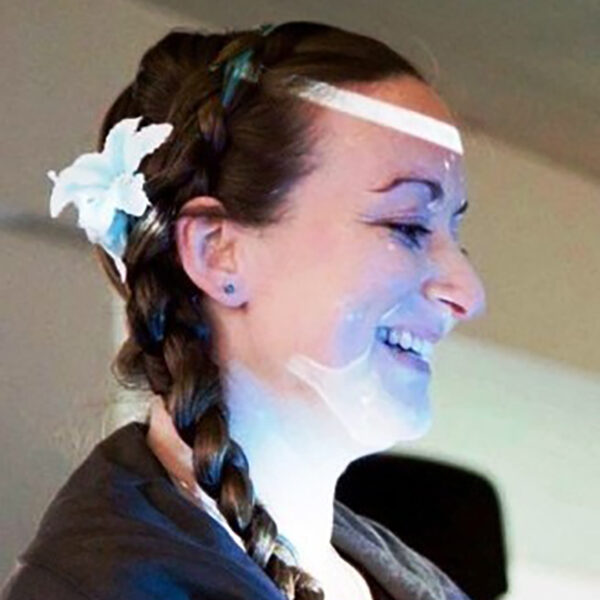
By Joanna Grace, The Sensory Projects
A few years ago I gave a keynote presentation at the Royal Academy of Art in which I hula hooped (don’t ask me to do that now!) it was entitled The Fluff of Life is the Stuff of Life. My audience were a mix of artists, teachers, parents, therapists, and heritage workers all attending a day’s conference on a Saturday that looked at how to make heritage settings more inclusive.
I opened my presentation by asking them why. Why were they wasting their Saturday on the fripperies of life? There are more important things to be doing. During the recent pandemic many in creative fields have been told that they are not essential. These things: art, history, stories from long ago, the creative pursuits, these things are not important! (A sentence I fear being quoted out of context).
When it comes down to it what we need is food, shelter and good health, if you’re not involved in providing those things then you’re not useful in life.
Except this is clearly untrue. As lockdown eases it is culture we reach out to. To survive lockdown many of us turned to creativity, exemplified so beautifully by Greyson Perry’s Art Club.
It is important to remember that these things count in ALL lives. Not just in the lives privileged enough to not be hampered by disability, old age, language barriers and so on. Engagement in culture counts in all lives, there is no one too young, too poor, too disabled, too different for whom culture is irrelevant.
Many of the people I work on behalf of have complex disabilities and lead foreshortened lives. In my working life I have been to too many children’s funerals. During their lives those children needed people fighting for services, they needed medicine, surgery, they needed therapists, they needed specialist equipment, all of those things were necessary in their lives for their life to continue. But…
… those things were not spoken of at the funerals.
At the funerals we remembered the joy taken in the crinkliness of a shiny balloon, we remembered the laughter of taking off trousers and finding their fold ups filled with glitter, we spoke of how he stilled with the music even when he was in pain, we talked of her reaching out and touching the trees.
These silly fripperious things that some would say amount to little more than fluff, are the stuff of life. The other stuff is important, nay, essential, it makes life possible, but all this silliness makes it worthwhile.
You may see barriers to engaging people with culture, some are physical, some cognitive, some sensory. All can be overcome.
Physical: put in ramps, get Changing places toilets, get your signage right and so on.
Cognitive: understanding is important to you, but what is the story without it? Isn’t that an interesting thought, what would your answer be? Is it a feeling, a sensation, a being there swept up in the atmosphere in the room. There is still something there isn’t there? And mightn’t that something, that we find hard to articulate be THE thing that makes that story so magical.
Sensory: perhaps my senses do not work as well as yours and you need to create a backdrop to experiences that enables my access, perhaps I process sensory information differently to you so that some sensations register differently to me, what is a soft sound to you is to me like being yelled at and this prevents my access. You can share with me the sensations I will experience, help me to map them, plan my visit. You can give me access.
Why bother? The people who sat in the Benjamin West lecture theatre that day, giving up their Saturdays certainly wanted to provide access to art and culture for differently abled people, they were in part (IN PART) there FOR those people, but they were also in part there for themselves. Everyone of them would have told you that they gained more from facilitating access for someone else than that other person gained. “I learned more from them” is a sentence I have heard countless times in my career.
What does someone with a profound disability, someone with dementia, someone who is neurodivergent bring to your setting when you remove the barriers to access?
You get a new way of looking, a new way of feeling, of sensing. In seeing through their eyes, hearing through their ears, you gain a new perspective on a story or art work you thought you knew.
In making things sensory you make them a fundamentally embodied experience, inviting everyone to shift from an intellectual engagement with culture into an embodied engagement. So very relevant in an anxious post COVID world. There is immense value in diversity, and in witnessing diversity being welcomed. We are each of us unique, we each fear our differences, hide parts of ourselves, worry that we will be rejected. A space that welcomes diversity, that actively invites and celebrates difference is a space dispels that fear. It is a space that liberates us – all of us, regardless of disability, ability or neurodivergence. It is a place people are free to be authentically themselves. Imagine if museums, art galleries, heritage settings were that: people would want to be there.
The stories we share have value because they are about life, about people, because they are told to people, because they are shared. The art, the culture has value because it speaks of life to life. That value is diminished when it is kept shut away, only for the few, it is like a candle flame starved of oxygen. When we share it, when we actively, creatively, ambitiously find ways to share it across, boundaries and barriers, we fan the flame into the most spectacular fire. Inclusion is for everyone.
https://www.thesensoryprojects.co.uk/


